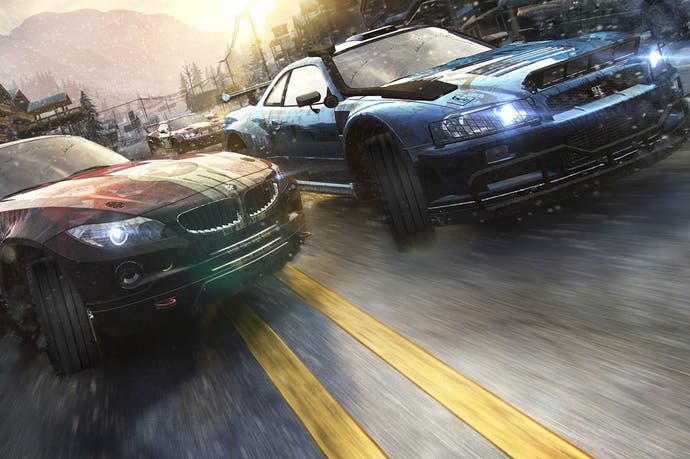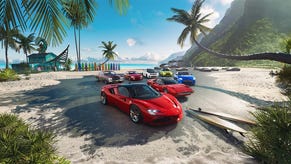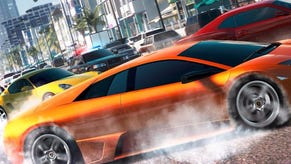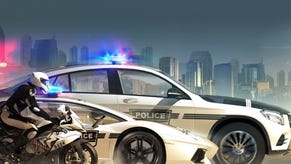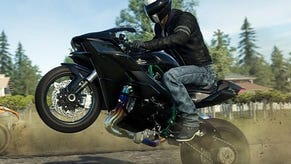Face-Off: The Crew
Trans Am.
As the year draws to an end, there's a sense that the gap between the PlayStation 4 and Xbox One is narrowing in terms of technical specifics in high-profile software. With The Crew, once again we see both console releases handing in a full 1080p presentation, and in common with a smattering of titles seen recently, the Microsoft hardware hands in some slender performance wins over its Sony counterpart. Of course, we've already gone over the basics of The Crew in the performance analysis posted earlier this week, but there's still plenty to cover, not least of which the quality of the PC version of the game.
We were hoping to hammer down the specifics of the bizarre anti-aliasing technology used in The Crew, but its full technical make-up remains something of a mystery. In truth, whether we're talking console or PC, this is one of weakest elements of the game's visual make-up. For now, we still think the console games utilise a variant of the HRAA solution used in Far Cry 4. We were impressed with how this new anti-aliasing technique performed in Ubisoft's open-world shooter, but the results in The Crew are very poor with the effect failing to tackle aliasing to any great degree across the scene - a lot of the time it simply looks broken. HRAA wasn't perfect on Far Cry 4, but it showed great promise. We're not entirely sure what's going on here, but if this is indeed HRAA, something has gone very wrong in its implementation.
The end results are noticeably better on PS4, where it appears that more samples are used during the blending process, although the effect breaks down more often than on Xbox One, making image quality seem worse than on the Microsoft system when this happens. However, while anti-aliasing isn't exactly great on PS4, overall coverage is better, and Xbox One often looks as though no AA is being applied at all. This is clearly demonstrated in our head-to-head video below, which shows just how much break-up occurs on small and distant objects.
Alternative comparisons:
On PC, achieving a solid level of image quality should be pretty straightforward, but even here there are serious aliasing issues. Choices are limited to multi-sampling (4x and 8x MSAA) and plain old FXAA, while owners of Nvidia cards also get the addition of 4x TXAA. Striking a balance between performance and edge-smoothing, we opted for 4x MSAA with our captures, however the results are disappointing with few surfaces getting adequate coverage and plenty of pixel-crawl on display - it often looks as though the game is running without any AA at all, but without the unusual edge artefacts present on consoles. Switching to 8x MSAA makes little appreciable difference to the situation, but noticeably impacts on performance, which already takes a significant hit as soon as any kind of multi-sampling is in play.
Disappointingly, the Nvidia-exclusive TXAA also fails to provide anything approaching a clean image, while incurring a similar performance hit to traditional MSAA. It seems that multi-sampling just doesn't work well with the rendering pipeline in The Crew, causing a distinct lack of coverage accompanied by a damaging drop in frame-rate. That leaves us with FXAA - a decidedly inferior post-process solution best left in the last generation, while SMAA is conspicuous by its absence.
Beyond the inconsistent image quality, The Crew holds up well between platforms from a general graphical perspective, with only a few relatively minor differences in some areas. The level of detail in the world is impressive given the sheer size and variety of the locations on offer, while a real-time day/night cycle and scripted changes in environmental conditions - the appearance of mist as you drive down from the mountains into the city, for example - helping to add a distinct atmosphere to the various North American landscapes during missions.
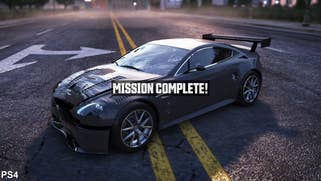
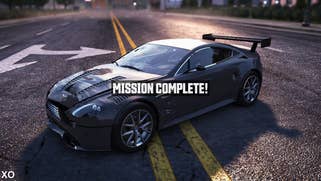

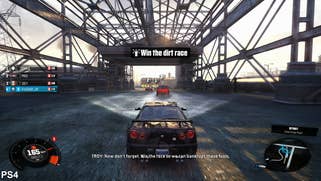
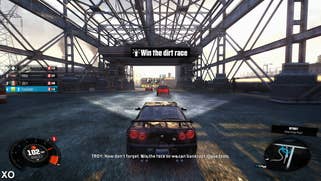

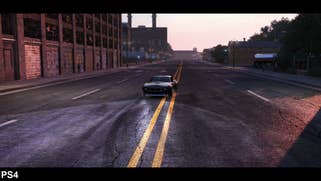

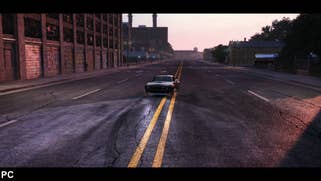
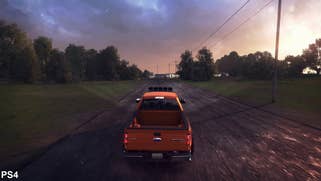
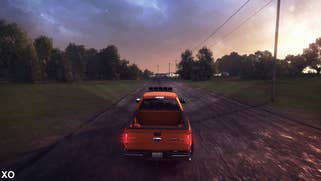
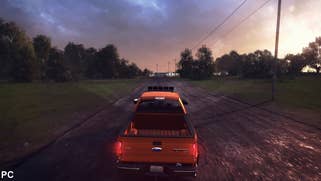
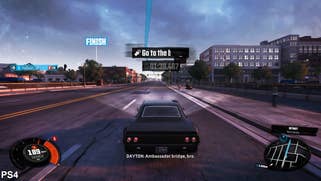
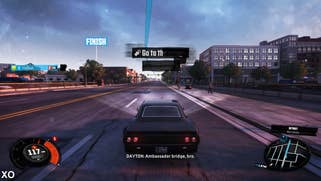
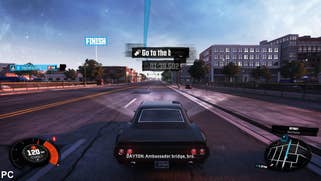
The PS4 and Xbox One versions of The Crew appear to operate at a similar level to the PC game running with ultra settings enabled for texture detail and geometry complexity, so the core artwork closely matches up between these versions, with intricate blemishes in brickwork and tarmac coming across distinctly. Interestingly, texture detail is a little blurred on the consoles in some areas compared to the PC game, but this seems to be caused by a temporal blur related to the bizarre anti-aliasing effect, rather than a deliberate downgrade in artwork quality.
Draw distances extend for miles into the distance in The Crew and this really helps to create a strong impression of a large seamless world that is ripe for exploration. In fact, it's possible to cut across country terrain, crashing through farmyards and fields while travelling across the vast and varied landscape. Racing through rural locations, we see the PS4 featuring a small but visible advantage with regards to foliage LOD transitions - trees appear fuller more quickly - followed by the Xbox One, and with the PC curiously in last place. The circumstances are slightly different in terms of general LOD steaming: textures and environment geometry are loaded in a little faster on the PS4 and PC than on Xbox One.
Dramatic PC upgrades are pretty much absent from The Crew, though the ability to run the game at much higher frame-rates is an enormous plus point for a racer. Graphical upgrades amount to a few higher-quality effects that add a little more refinement. The main upgrades are centred around the use of HBAO+ and contact hardening soft shadows. The former creates extra depth around cars and environment details by displaying a darker shade of ambient shadowing around these objects, while the latter allows for shadows to become more diffused as they move further away from the casting light source, such as headlights or the sun.
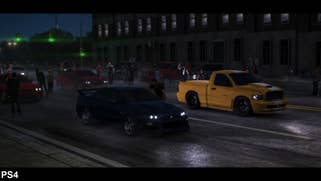

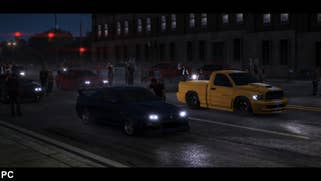
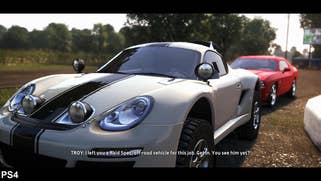


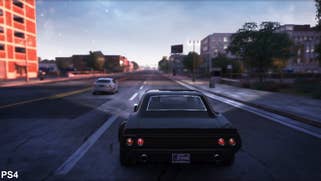

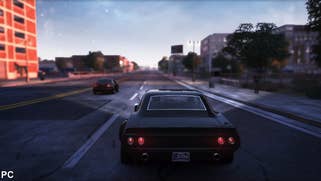
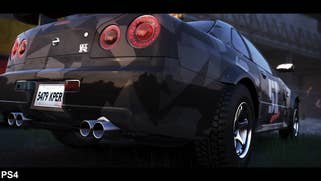
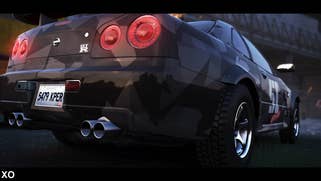
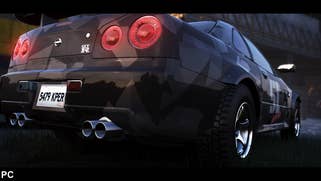

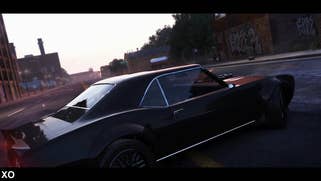

In other areas, environment mapping is rendered at a higher resolution to consoles, although the quality of reflections across car widows and shiny surfaces in general is pretty hit-and-miss. From a distance, reflections appear reasonably crisp, but up close they take on a distinctly blocky look. Depth of field is also given a boost too: elements that are out of focus appear more strongly blurred on PC. Curiously, bloom on car headlights is either toned down or absent entirely in many scenes on the PS4 (appearing identical on Xbox One and PC), while environment mapping is applied across reflective surfaces in a lower resolution than on Xbox One, leading to these elements appearing a little more blocky on Sony's console.
In terms of performance, The Crew does a generally good job of maintaining a solid 30fps for the majority of the time on both consoles, although we do see some tearing and dropped frames on occasion across both platforms when engine is under load. This usually happens in built-up city locations when quickly changing direction, or when exploring more detailed parts of the environment during early morning and evening conditions when there are more light sources on-screen. Here, the Xbox One game generally has the advantage, with drops in performance happening less frequently and to a lesser extent when they occur.
The Crew operates using an adaptive v-sync on both platforms, so torn frames are displayed when the renderer goes over budget, thus helping to prevent large drops in frame-rate from occurring. Tearing happens more often on the PS4, although it rarely impacts upon gameplay to a significant degree. In comparison we see fewer torn frames on the Xbox One, with these being replaced by a few dropped frames instead. In particular, the pre-race sequences often feature some mild tearing on the PS4, while remaining mostly solid on the Xbox One.
In terms of PC performance, we were pleasantly surprised by The Crew, bearing in mind the furore surrounding the enforced 30fps cap found in the beta (which is removed in the final game, as promised). Kicking off with a Core i5 4650K running at stock speeds, we tried the game across a series of popular GPUs. The £120 Radeon R9 270X (effectively the PS4 graphics core with two extra compute units, more bandwidth and a 20 per cent clock speed boost) handed in a pretty consistent 1080p60 showing on high settings - which is all the more impressive bearing in mind that the only difference with ultra here comes in the form of anti-aliasing, ambient occlusion and shadow cutbacks (and differences in the latter two are difficult to notice when bombing about at top speeds).
Lesser cards - such as the £80 Radeon R7 260X and the faster GeForce TX 750 Ti - struggle somewhat, requiring a 30fps cap to give consistent performance. The Crew's internal 30fps limiter has some frame-pacing issues, so Nvidia owners should utilise half-rate adaptive v-sync via the control panel and set the game's frame-rate limiter to 60fps for best performance. 1080p resolution on high settings should be the target on these 2GB sub-£100 graphics cards - console quality, in effect.
Moving onto more capable cards, such as the R9 280 and the GTX 760, we were able to dial up a few more quality settings without upsetting 1080p60 gameplay, effectively moving us into a midway point between the high and ultra presets. At the top-end, we tried our luck with a GTX 970 at full ultra, and came away away disappointed with the stutter introduced into the experience. It's quickly apparent where this comes from - The Crew features 4x MSAA and 4x TXAA (Nvidia only) multi-sampling options, and in many scenarios, it cripples performance. Curiously, high concentrations of trees appear to have more impact on performance than busy cities, but regardless, for high-end GPU owners, we recommend downsampling from 2560x1440 - or indeed, running at native resolution if you have the required display - and tweaking from there.
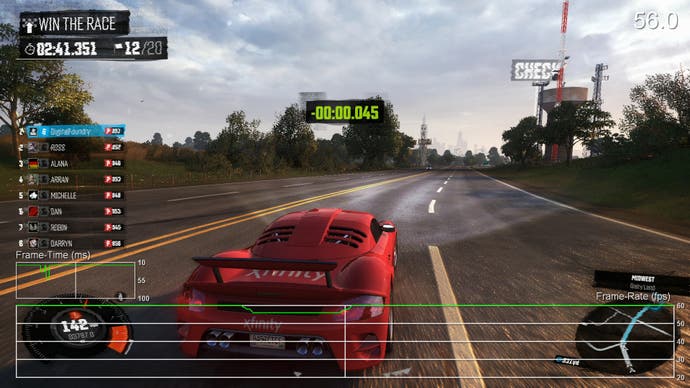
On the face of it, The Crew's GPU requirements are relatively light for a great experience. However, similar to Call of Duty: Advanced Warfare we found that performance on AMD cards (we tested the R9 270X and R9 280) was considerably impacted in city areas when paired with a Core i3 CPU, whereas the Nvidia GTX 760 - which sits in the middle of the two AMD cards generally - worked just fine on the dual core processor. Once again it seems that AMD requires a better CPU to get the most out of the graphics card. Switching to a Core i5 saw the frame-rate drops we saw all but disappear.
Overall, 60fps makes a big difference to the look and feel of the game. Ivory Tower has optimised well, and it's relatively easy to comprehensively beat console performance without breaking the bank in terms of the required hardware. The R9 270X, GTX 760 and especially the R9 280 offer excellent performance for their price-points and all of them hand in a very similar 1080p60 experience, with just minor quality tweaks between them. The only fly in the ointment is the limited anti-aliasing support - MSAA and TXAA are too impactful on performance and the only other option is FXAA, which looks poor. In the era of SMAA and its temporal offshoots, there's no excuse for not putting the effort in with a decent post-process anti-aliasing solution - but there we are.
The Crew - the Digital Foundry verdict
As a spiritual successor to the Test Drive Unlimited games, there's a lot to like about The Crew - specifically its sprawling and highly detailed recreation of North America, and the ability to go off an explore at your own pace. However, at the same time the experience is let down by a few issues that serve to prevent you from being fully immersed in the game world. Image quality is poor overall for a current generation release, and often ruins the sight of distant scenery through a veil of shimmering and broken-up fine detail. Meanwhile, the handling model - although much improved over the Test Drive games - still feel somewhat laggy and unexciting, where you never quite get the impression you are in full control.
On a technical level, the native 1080p resolution across both consoles is welcome to see, although neither version takes advantage of this benefit due to the poor anti-aliasing, and the appearance of strange artefacts which give both versions a fuzzy look. PS4 owners get better image quality most of the time along with slightly faster LOD streaming, but a curious reduction in bloom effects. Meanwhile, Xbox One gains a small performance advantage, featuring less tearing, but occasionally dropping frames instead. It's hardly a 'win' for either platform then, with each having its own plus and minus points, but neither really providing a definitive version. On balance the PS4 game's slightly better image quality gets the nod here, but considering the gulf in GPU power, the main takeaway is that both versions are fairly close, all things considered.
While the consoles battle it out with their relatively minor plus and minus points, it's the PC that powers away from the pack to take the prize. This may be a bit of a no-brainer, but 60fps gameplay makes a big difference - especially for a driving game. It really helps in improving the responsiveness of the handling, while the extra temporal resolution better fleshes out the more intricate details of the environment in motion. However, image quality remains a disappointment (particularly in terms of anti-aliasing options) and there's little that can be done to improve things, outside of upping the resolution beyond 1080p. But on the flip side, The Crew appears to be very well optimised in other areas, with 60fps achievable without the need for ultra-expensive components.
